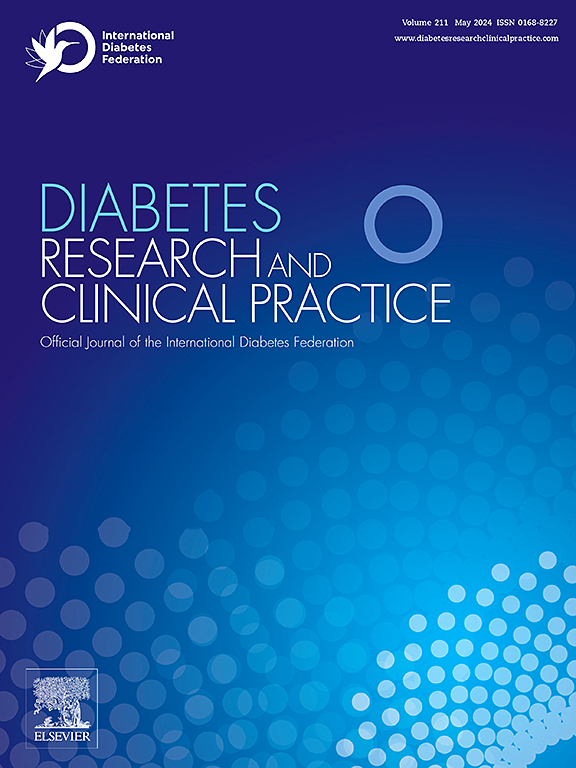Beyond glycemic metrics: Real-world benefits of connected insulin pens in type 1 diabetes
IF 7.4
3区 医学
Q1 ENDOCRINOLOGY & METABOLISM
引用次数: 0
Abstract
Aims
To determine whether connected insulin pens can improve glucose control, variability and patient-reported outcomes in type 1 diabetes.
Methods
Prospective, multicenter, real-life clinical practice study with 220 participants treated with multiple daily insulin injections and continuous glucose monitoring. HbA1c, glucometry, quality of life, awareness and fear of hypoglycemia, treatment satisfaction and glucose variability were analyzed before and 12 weeks after using connected pens, with no changes in the treatment regimen or the type of insulin during this period. Omitted basal and prandial insulin injections and delayed prandial doses were recorded and analyzed for their influence on glycemic control.
Results
Time in range (TIR), hypoglycemia awareness and patient-reported outcomes improved and HbA1c decreased. Time spent with glucose 120–140 mg/dl increased, whereas time spent 240–300 mg/dl decreased. The omission of basal and prandial insulin doses was frequent (33.8 % and 65.7 %, respectively) as well delayed injections (90.5 %). The omission of basal insulin had a greater impact than prandial omissions: increase in 10/16 variability indexes examined and time above range, and decrease in TIR and TTIR. Delayed prandial doses elicited an increase in 7/16 analyzed variability parameters.
Conclusions
Connected insulin pens enhanced glycemic control, mitigated glucose variability and improve patient-reported outcomes.
超越血糖指标:连接胰岛素笔对1型糖尿病的实际益处。
目的:确定连接胰岛素笔是否可以改善1型糖尿病患者的血糖控制、可变性和患者报告的结局。方法:前瞻性、多中心、现实临床实践研究,220名参与者接受每日多次胰岛素注射和连续血糖监测。在使用连接笔前和12 周后分析HbA1c、血糖、生活质量、对低血糖的意识和恐惧、治疗满意度和血糖变化率,在此期间治疗方案和胰岛素类型没有变化。记录和分析遗漏的基础和餐后胰岛素注射和延迟的餐后胰岛素注射对血糖控制的影响。结果:范围内时间(TIR)、低血糖意识和患者报告的结局改善,HbA1c降低。葡萄糖120-140 mg/dl的时间增加,而240-300 mg/dl的时间减少。基础和膳食胰岛素剂量的遗漏(分别为33.8% %和65.7% %)以及延迟注射(90.5% %)是常见的。基础胰岛素的遗漏比正餐的遗漏影响更大:10/16个变异性指标检查和时间高于范围,TIR和TTIR下降。延迟膳食剂量引起7/16分析变异性参数的增加。结论:连接胰岛素笔增强血糖控制,减轻血糖变异性,改善患者报告的结果。
本文章由计算机程序翻译,如有差异,请以英文原文为准。
求助全文
约1分钟内获得全文
求助全文
来源期刊

Diabetes research and clinical practice
医学-内分泌学与代谢
CiteScore
10.30
自引率
3.90%
发文量
862
审稿时长
32 days
期刊介绍:
Diabetes Research and Clinical Practice is an international journal for health-care providers and clinically oriented researchers that publishes high-quality original research articles and expert reviews in diabetes and related areas. The role of the journal is to provide a venue for dissemination of knowledge and discussion of topics related to diabetes clinical research and patient care. Topics of focus include translational science, genetics, immunology, nutrition, psychosocial research, epidemiology, prevention, socio-economic research, complications, new treatments, technologies and therapy.
 求助内容:
求助内容: 应助结果提醒方式:
应助结果提醒方式:


